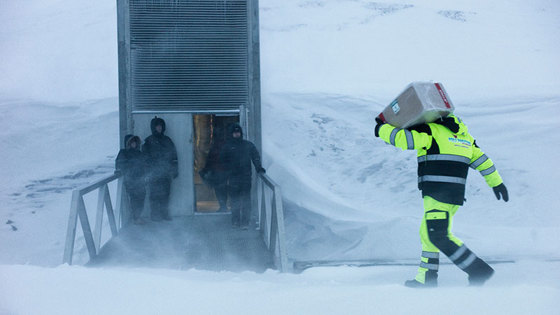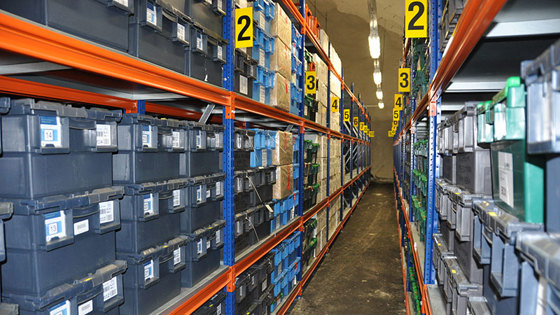10,000 new seed samples into the vault in October
Historical archive
Published under: Solberg's Government
Publisher: Ministry of Agriculture and Food
News story | Date: 28/10/2015
Five gene banks and research centers on four continents deposited seeds at this year's fifth and final opening of the Svalbard Global Seed Vault. A total of 10,060 new seed samples, from gene banks in Asia, Africa, South America and Europe, were added to the stores.
Four of the gene banks are international CGIAR centers (Consultative Group for International Agricultural Research). 15 such centers have been established, located around the world, but mostly in developing countries. In addition to hosting regional genebanks, these centres are doing research and development of new plant varieties.
The centers are specializing either in one or a few key plant species, or they are working with a range of plant species that are important in the site region. IRRI in the Philippines is the International Center for Rice Research and has now sent 5392 new seed samples covering 7 different species of rice. IRRI is among the departments with the highest number of seed deposits in the vault, having already stored more than one hundred thousand seed samples deep in the Svalbard permafrost.
New seeds are carted into the vault, packed in crates each containing a maximum of 400 seed types. The crates are sealed by the depositing gene bank. The crate can hold up to 400 seed samples each. Each seed sample consists of around 500 seeds placed in an airtight aluminum bag. The vault has storage capacity for 4, 5 million different seed types and can thus accommodate duplicates of all the unique seed types that currently exist in many gene banks around the world, in addition to new seed types which will be collected in the future.

ICRISAT, headquartered in India, and IITA with headquarters in Nigeria are also among those with substantial plant variety seed deposits in the vault. Both work with a large number of tropical crops, and this time deposited 1662 and 1376 seed samples, respectively, all different types of beans, peas, millet, sorghum and maize from so-called accessions, i.e. lots gathered at particular geographical locations.
CIP, the International Potato Center in Peru, deposited 559 accessions of a total of 133 species of roots and tubers from rural areas in the Andes. These plants are essentially close relatives of the potato and sweet potato which can be used in plant breeding to create new varieties.
The only national gene bank to deposit seeds this time was the Dutch CGN, depositing 1071 seed samples from a total of 106 species, mainly vegetables and fodder crops. CGN, too, is one of the gene banks with an already extensive vault deposit.
Due to high interest in the seed vault and its September / October return of seeds to ICARDA, the gene bank in Aleppo in Syria, this vault opening saw a record number of media visitors, most of them foreign.
Approximately 10 television stations as well as radio, newspaper and magazine journalists, press agencies, and documentary producers, again from four continents, visited the vault for filming, photography and interviews.
